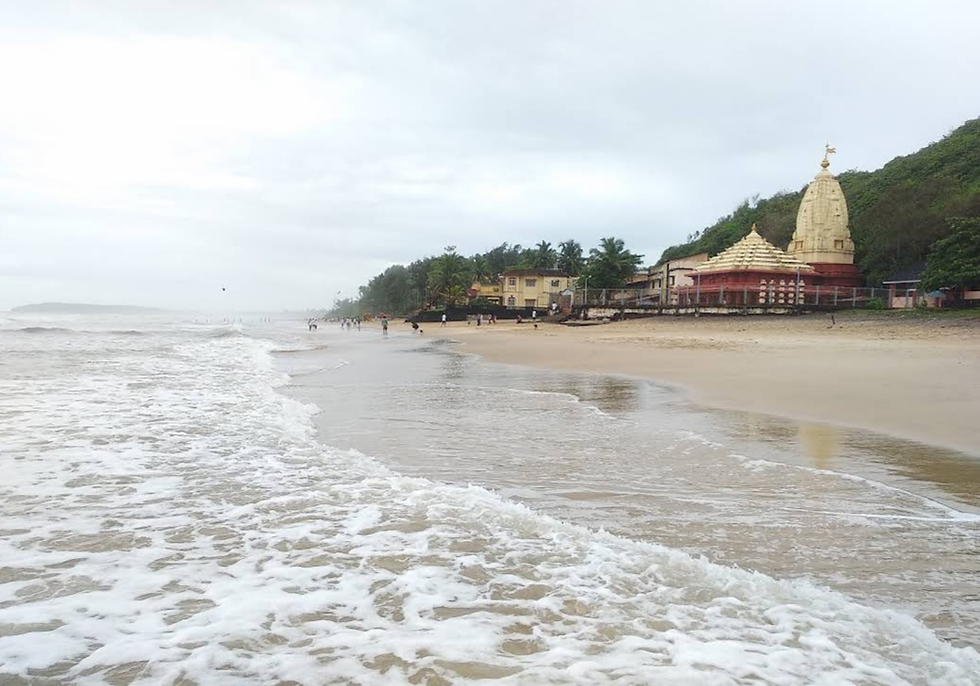Why Ganpatipule Beach Can Be Risky for Swimmers
- Pratik

- Dec 30, 2023
- 3 min read
Updated: Mar 5, 2024
As someone who grew up visiting Ganpatipule beach in Maharashtra, I have a deep appreciation for its natural beauty. The swaying coconut palms, golden sand, and rolling waves make it an idyllic getaway.
However, over the years I have also witnessed the beach's dangerous side, especially for swimmers. Through my experiences, I hope to provide guidance to help keep beachgoers safe.
Deceptively Strong Rip Currents
The main risk at Ganpatipule is the presence of rip currents - fast, narrow currents that flow away from shore. As alluring as the waters may seem, these currents can catch even the strongest swimmers off guard.
I recall one sunny afternoon when I waded into the waves along with my friends. Within minutes, we found ourselves caught in churning waters despite being just waist-deep. My friend beside me lost his balance and was swept away in a flash.
Fortunately, the lifeguard was attentive and helped bring him back, exhausted but safe. It was a scary wake-up call about respecting the power of rip currents.
Sudden Drop-Offs
In addition to rip currents, Ganpatipule and many Indian beaches have sudden drop-offs, where the ocean floor plunges down steeply. I've had more than one moment where I unexpectedly couldn't touch bottom while swimming. It's easy to venture out farther than is safe without realizing it.
Once I was out boogie boarding and unintentionally drifted over a drop-off. To my shock, with a single wave, I was knocked off my board and found myself stranded in deeper waters. I had to fight past the building waves to make my way back to shore. It was a lesson in being vigilant about spotting shoreline features.
Also read - Reaching The Ganpatipule From Pune
Lack of Lifeguard Supervision
Compared to beaches in other countries, lifeguard services at Indian beaches can be more limited. Over the years at Ganpatipule, I've seen stretches of beach with no lifeguard security post in sight. With crowds of tourists and locals flocking to the shores, the lack of supervision poses a real risk.
I've come across distressed swimmers being helped by good Samaritans. However, not everyone has the skills to conduct a safe rescue. There have also been unfortunate incidents where lives were lost due to drowning. Having robust lifeguard cover across all zones could help mitigate this.
Staying Safe at the Beach
Despite the dangers, Ganpatipule's charm endures. By being aware and staying safe, beachgoers can continue to enjoy its natural bounty. Here are my top safety tips:
Be beach-safe
Learn about rip currents and how to break free if caught in one
Swim only at beaches with lifeguards present
Never swim alone or under the influence of alcohol
Spot hazards
Watch for beach signage and flags indicating conditions
Check for drop-offs and sandbars
Obey all warning signs and barricades
Prepare before swimming
Speak to lifeguards about safety
Keep a floatation device handy
Secure valuables so you can focus on swimming
As with any natural environment, respecting the beach is key. With some common sense and caution, we can keep enjoying Ganpatipule's captivating and nostalgic shores for years to come.
The Road Ahead
In recent years, there has been growing awareness about beach safety in India. However, more needs to be done when it comes to preventative actions like lifeguard services and public warning systems. With drowning accidents unfortunately being common, such measures can literally save lives.
My hope is that over time, more resources will be allocated towards training personnel, installing safety gear, and educating beachgoers. Ideally, visiting the beach should evoke carefree joy, not latent anxiety.
Places like Ganpatipule have so much to offer if we respect the risks and take smart precautions when having fun.
With some practical changes, India's breathtaking beaches can be enjoyed even more safely for generations. We owe it to both future visitors and the communities reliant on coastal tourism to make steady progress.
Summary
Certainly, here are the reasons why Ganpatipule Beach can be dangerous,
Rip Currents: Strong currents that pull swimmers away from the shore.
Sudden Drop-Offs: Abrupt changes in depth, leading to unexpected deep waters.
Limited Lifeguard Supervision: Areas of the beach may lack lifeguards, delaying rescue efforts.
Lack of Awareness: Visitors may underestimate risks due to unfamiliarity with beach hazards.
Unpredictable Weather: Rapid weather changes can create hazardous swimming conditions.
Alcohol Consumption: Impaired judgment from alcohol increases the risk of accidents.
.png)




Comments